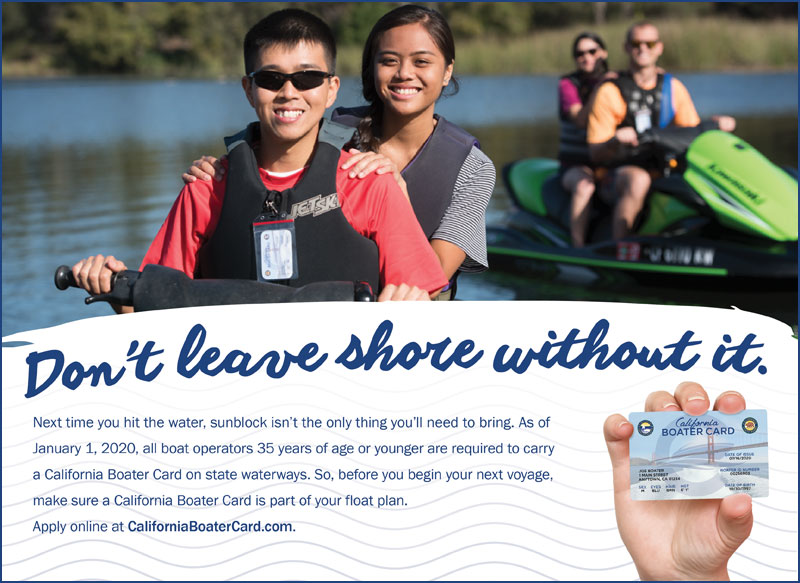
County Health Commissioners Require No-Handed Sailing
Due to the sudden surge in cases of COVID-19, Bay Area health commissioners have once again clamped down on sailing. Fortunately, they realized the risk only applies to sailors but not to sailboats. For the balance of the summer, sailboats will be allowed to go sailing as long as there are no sailors aboard. One of the first to comply was the Beneteau 35.7 Pain Killer, hailing from Alameda.
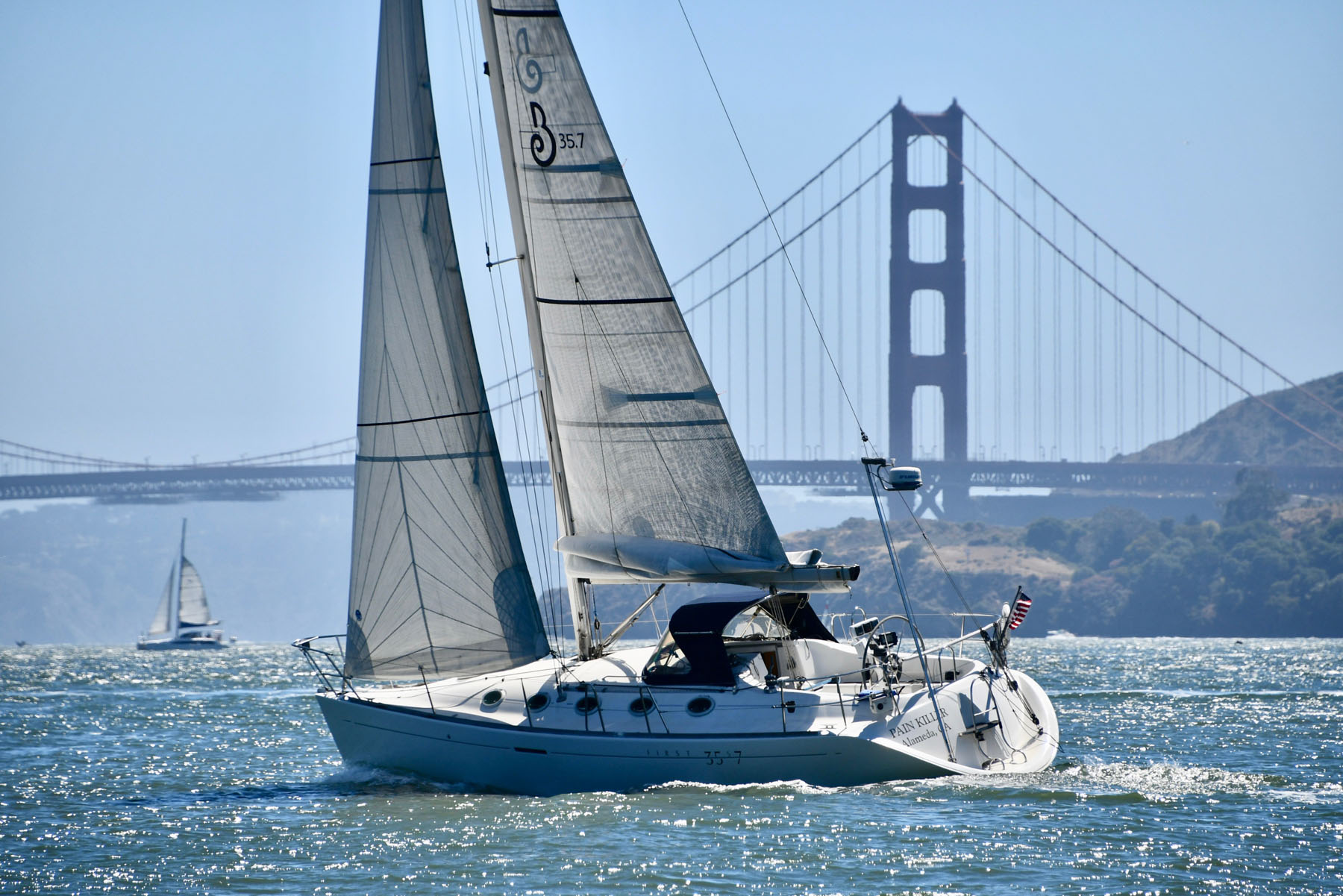
This has raised concerns within the Singlehanded Sailing Society about a new, ‘No-Handed Sailing’ organization forming, which will compete with their events by boasting even fewer sandwiches, beer and T-shirts needed to keep the crew happy.
Bay Area’s Three Bridge Fiasco Hits the East Coast
One of the Bay Area’s favorite sailing regattas, the Three Bridge Fiasco, has hit the big time and is set to be replicated on the East Coast — specifically at Annapolis Yacht Club. Thanks to Scuttlebutt News for sharing the story with us, and allowing us to share it with our readers.
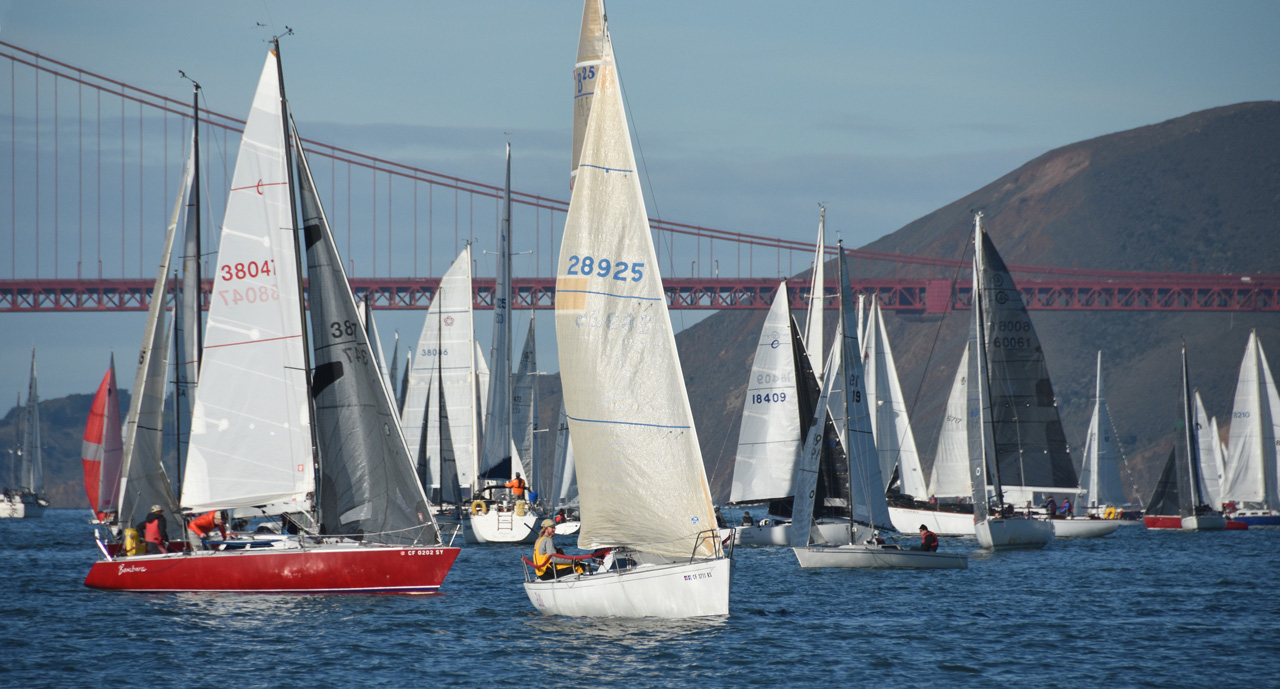
COVID-19: Anarchy bad, Fiasco good
The coronavirus pandemic has touched us all, but in these challenging times comes opportunity. Sierra Kelly at Annapolis Yacht Club shares their story:
Perhaps the most popular annual regatta on San Francisco Bay is the Three Bridge Fiasco. Organized by the Singlehanded Sailing Society, it is traditionally the first race of the season in late January and routinely attracts upwards of 300 boats.
In addition to being restricted to either singlehanded or doublehanded teams, the distance race around government marks incorporates several unique elements. It starts and finishes in front of Golden Gate Yacht Club with competitors required to round marks located near the Golden Gate Bridge (Blackaller Buoy), the Bay Bridge (Yerba Buena), and the Richmond-San Rafael Bridge (Red Rock).
What makes the Three Bridge Fiasco truly different is that each skipper can sail the course in whatever direction they choose, which can make for some interesting situations. Now the Annapolis Yacht Club is bringing the concept to the Chesapeake Bay.
AYC will debut the Two Bridge Fiasco on August 2 and it promises to deliver all sorts of excitement and craziness. It will incorporate many of the same elements of the San Francisco event with slight alterations.
“People say they want more fun in sailboat racing and that’s what we’re trying to deliver with this regatta,” said Dick Neville, a member of the Annapolis Yacht Club Sailing Committee.
As the name alludes, the Annapolis-based event will require competitors to round marks set just short of the Chesapeake Bay Bridge and the Naval Academy Bridge. Skippers can choose shortly after starting which bridge to sail toward first, a decision that figures to involve significant intrigue.
In a nod to safety in the coronavirus age, organizers are limiting entries to singlehanded or doublehanded teams.
What makes the Two Bridge Fiasco truly unique is that every type of sailing vessel known to man will be allowed to participate. Annapolis Yacht Club has purposefully declared in the Notice of Race that this is not strictly a big boat regatta and is encouraging such craft as Hobie Cat, Laser, windsurfer, kiteboard, and all manner of racing dinghy.
– Continue reading here.
And in a footnote, Scuttlebutt editor Craig Leweck tipped his cap to another iconic West Coast race: One of my favorite local races is another tribute to the Three Bridge Fiasco, but as we only have one bridge on San Diego Bay, it’s called the Three Mark Fiasco. Super fun as you sort through the tides and wind angles, with boats invariably finishing from different directions. It’s a fiasco! – Craig Leweck, Scuttlebutt.
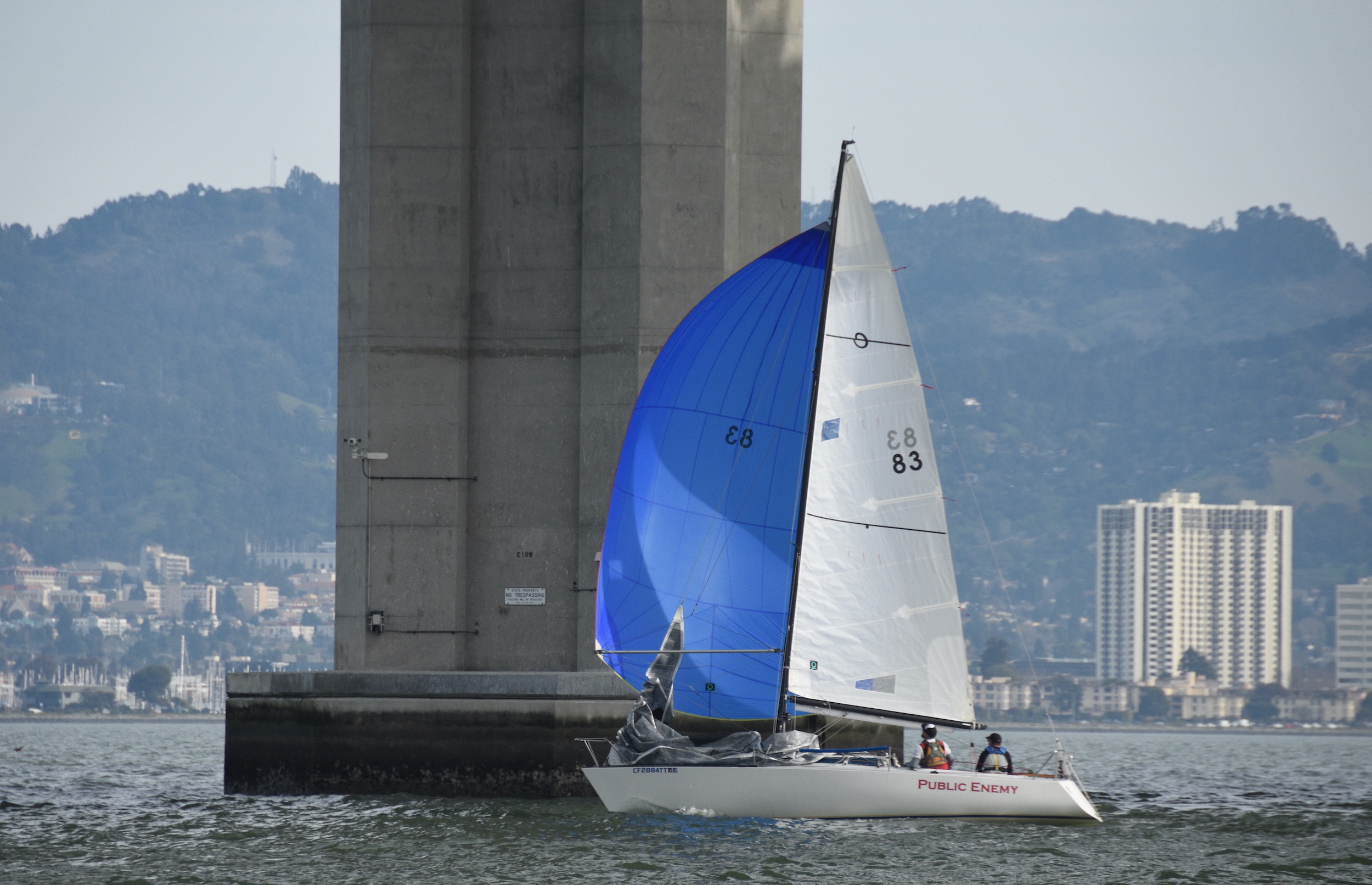
Question: Why does everyone love a Fiasco? The Three Bridge Fiasco is reputed to be the largest sailboat race in the US. It’s certainly way up the list and has been a huge success on San Francisco Bay. Run by the San Francisco Bay Singlehanded Sailing Society, the event attracts over three hundred competitors despite frequently having almost windless conditions. Could the message be that the racing world’s quest for perfection has reduced the fun? Is crazy better? The SFBaySSS certainly struck a chord and, if it attracts more people to race courses anywhere, we’re sure they appreciate the imitation.
If you have something interesting to share, send your story and photos to [email protected].
Division of Boating and Waterways Boater Card
Masked Sailors Take to the Bay
Last week we published a story about masked sailors across the Bay Area and invited readers to send us photos and comments about their masked-sailing experiences. We received this response in the mail from Sausalito sailor George Scott.
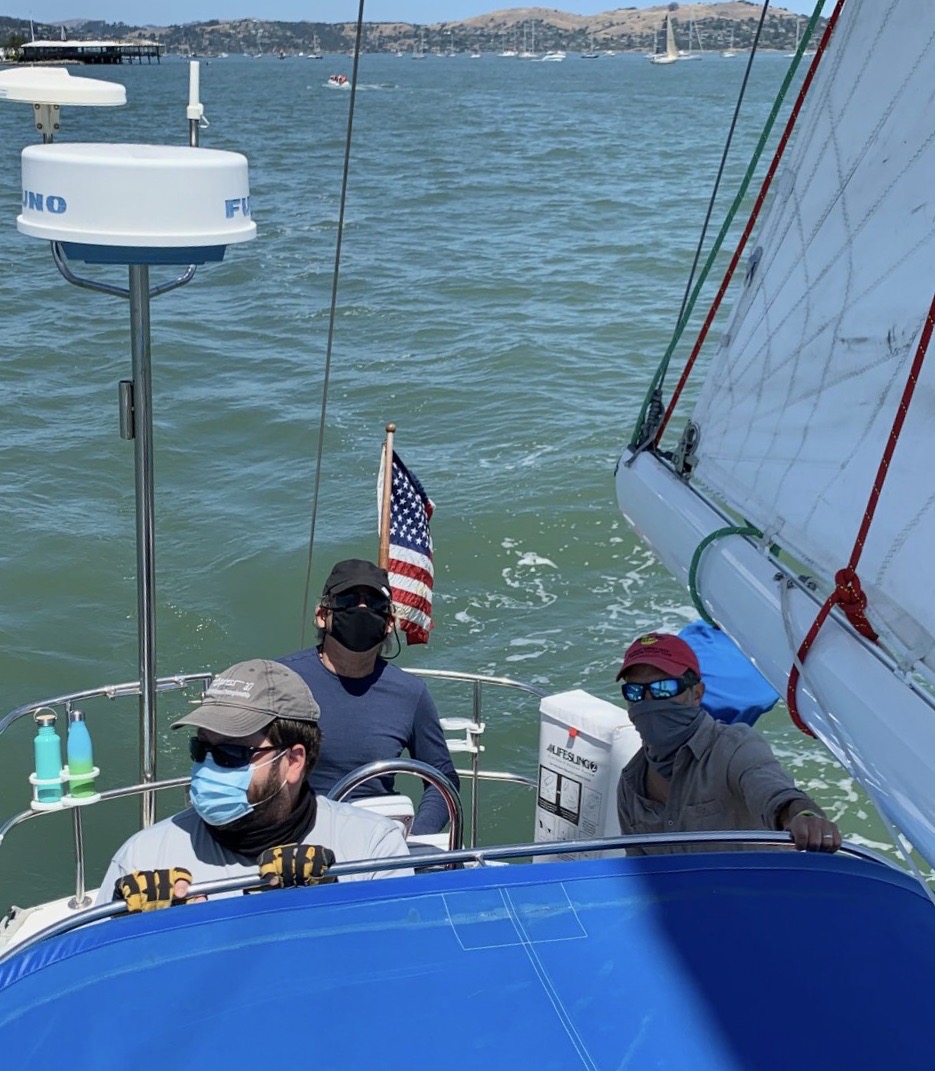
Sunday June 21:
After staying at the dock for over 100 days I decided it was time to take my boat out on the Bay. The COVID sailing rules of S/V Freyja include keeping the crew size to a maximum of four — Freyja is a 35′ sailboat — wearing masks at all times, using hand sanitizer when appropriate, and each crew bringing their own food and drink (no sharing). We found that wearing masks was no big deal.
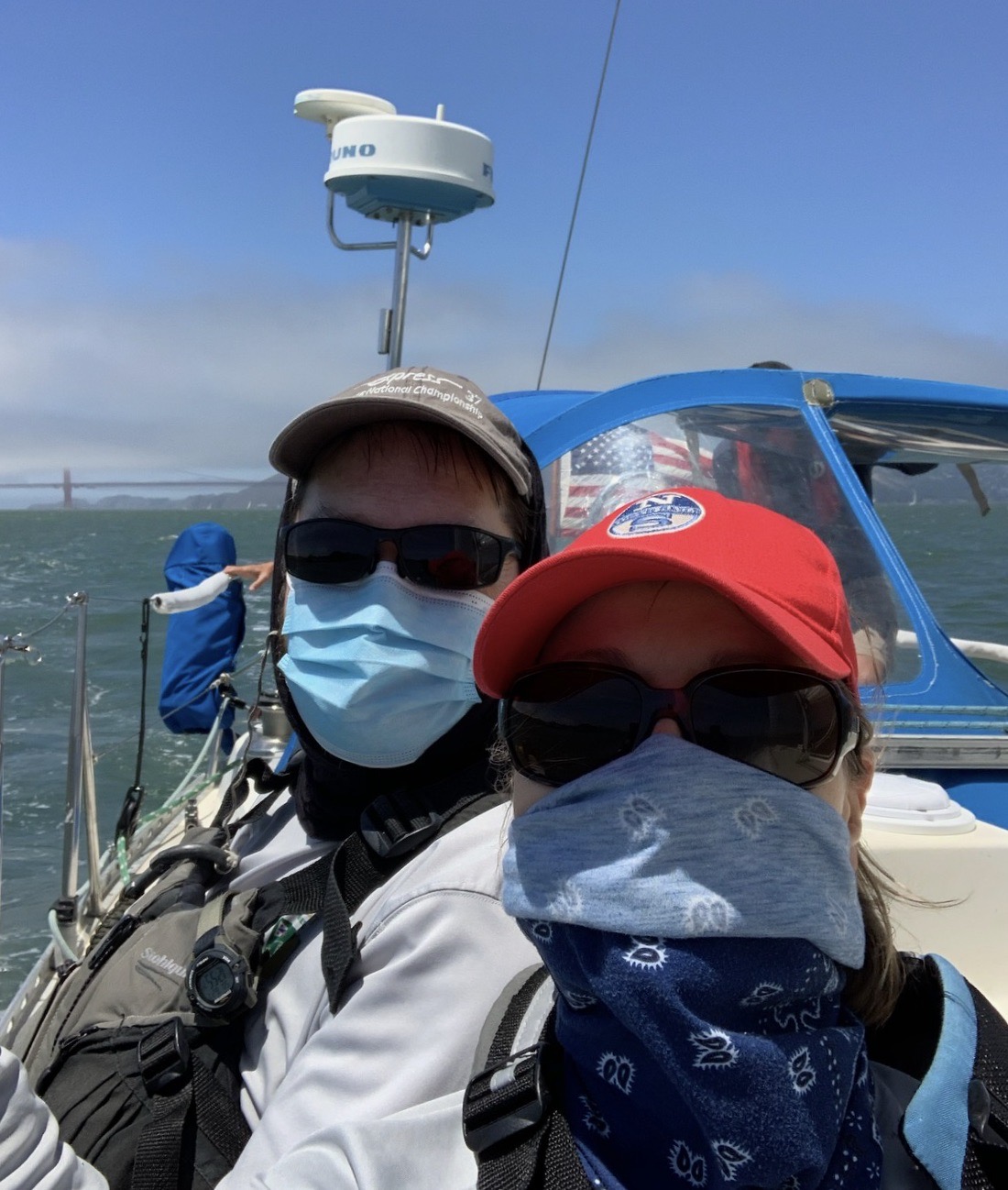
It was a beautiful, breezy day on Sunday, and having a mask did not impair our enjoyment! A doctor friend of mine says wearing masks when outdoors in windy conditions is not necessary but still, better safe than sorry.
Freyja is a well-found boat with full emergency equipment and a crew with years of safe sailing history. I didn’t feel there was any real potential for burdening the Coasties or other emergency services. After all, riding a bicycle certainly has greater potential for adding to the emergency-services burden than sailing, and no one seems to question the mental and physical benefits of riding a bicycle these days.
I say, “Sail on, sailor!” (But make sure you do it safely and conscientiously.).
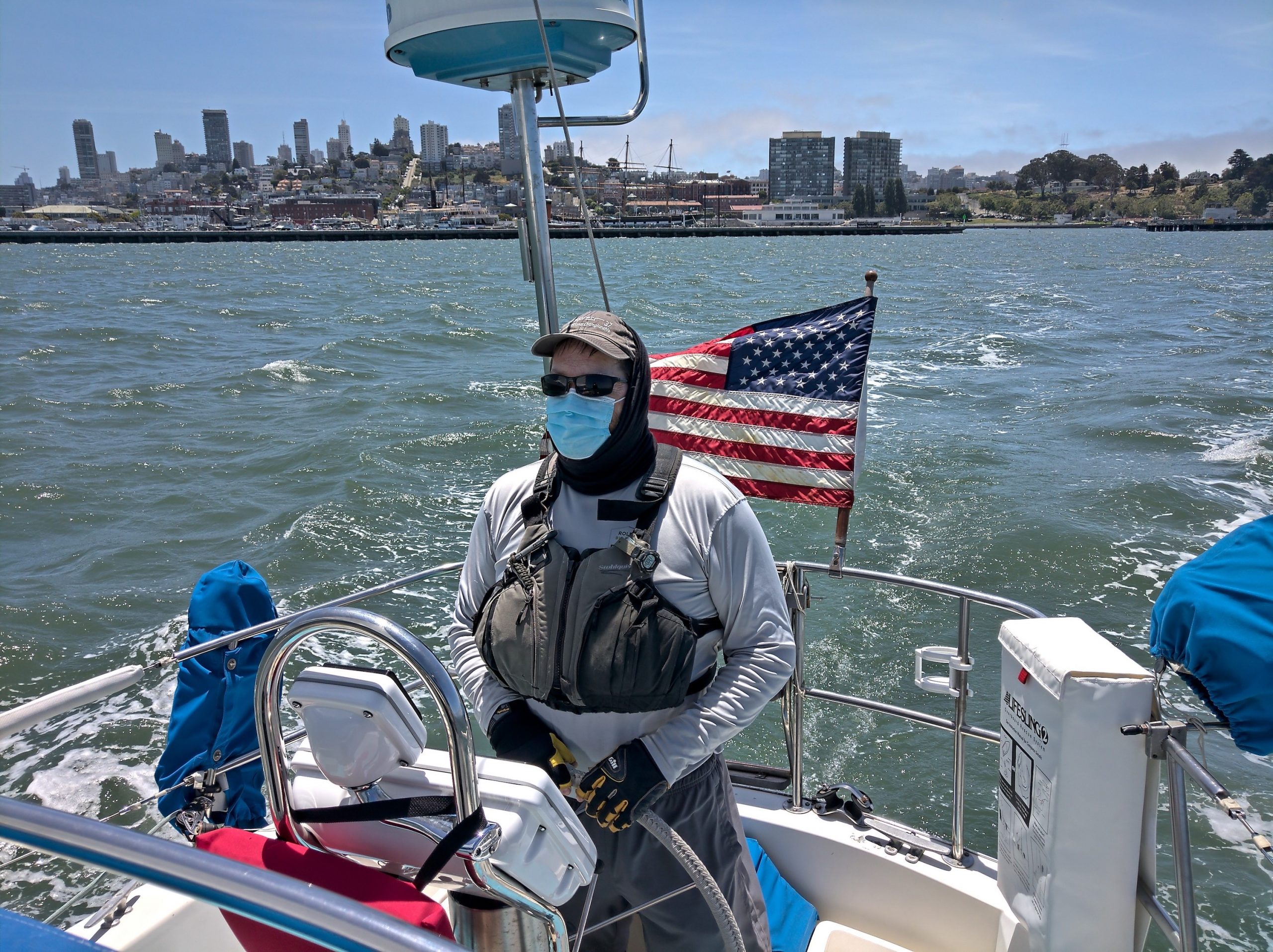
Regards,
George Scott
S/V Freyja (Cal 35 Mk II)
Sausalito, CA
George receives extra points for including details of his boat and home port, along with the names of his masked companions in the photos. A+,George!
Thrilling First-Ever Vendée-Arctique Wraps Up
The first major ocean race of the COVID-19 era has drawn to a close, but not before providing some of the closest and most thrilling IMOCA racing of all time. Never before has the sport — and the class — seen a race where boats were overlapped and racing within sight of one another for thousands of miles.
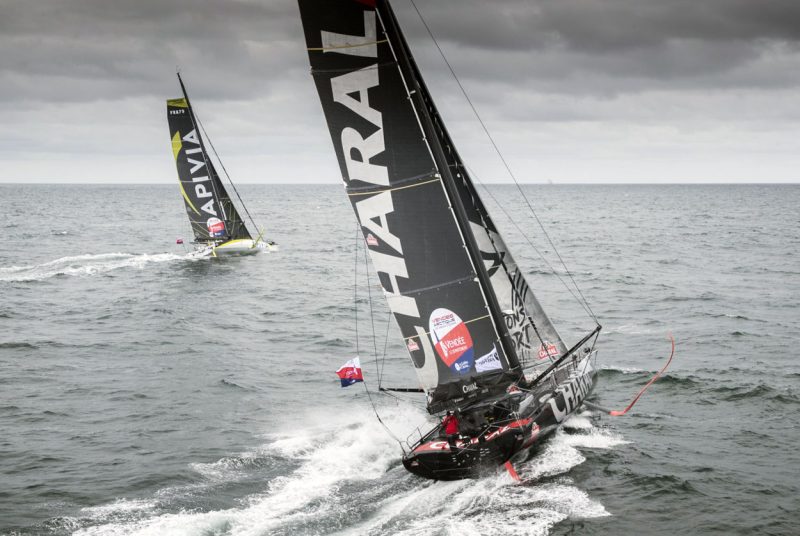
After each turning mark in the inaugural Vendée-Arctique race, much of the fleet endured a restart of sorts, which kept the racing incredibly close. When the dust settled, Jérémie Beyou on the mighty Charal landed on the top step of the podium. The first boat launched of this new generation of IMOCA 60s, Charal had been plagued by reliability issues when she was brand-new, but with two years of development now under their belts, Beyou and Charal are looking highly refined in the final run-up to the Vendée Globe.
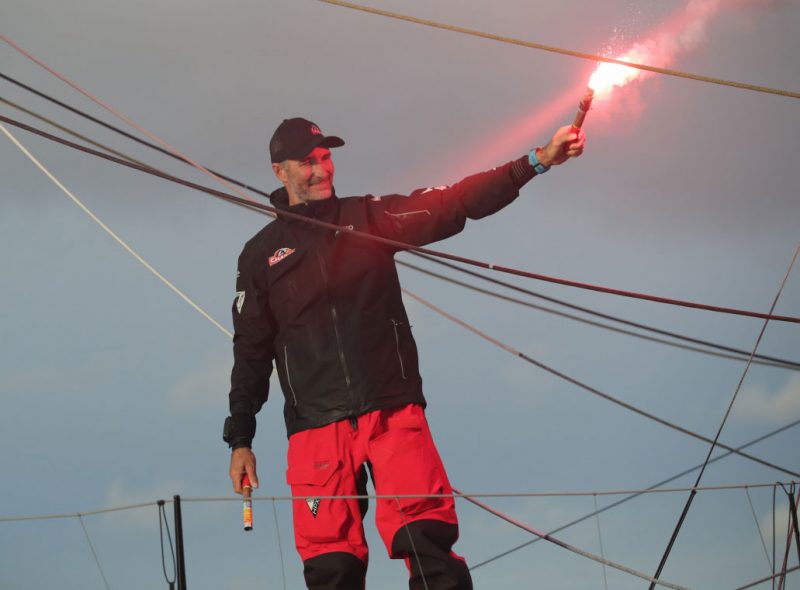
Less than an hour back after close to 3,000 miles of racing, Charlie Dalin on Apivia took second place. After winning last year’s doublehanded Transat Jacques Vabre race alongside the legendary Yann Eliès — the last race to take place on the IMOCA circuit before this one — Dalin and Apivia have continued to cement their positions as pre-race favorites for the Vendée Globe. Rounding out the podium was Thomas Ruyant and his new Guillaume Verdier-designed LinkedOut. This top trio of new-generation foiling IMOCAs was just a slight cut above the rest of the fleet during this entire race. They vied for the top position, oftentimes fully overlapped, for the entire complex Vendée-Arctique course.
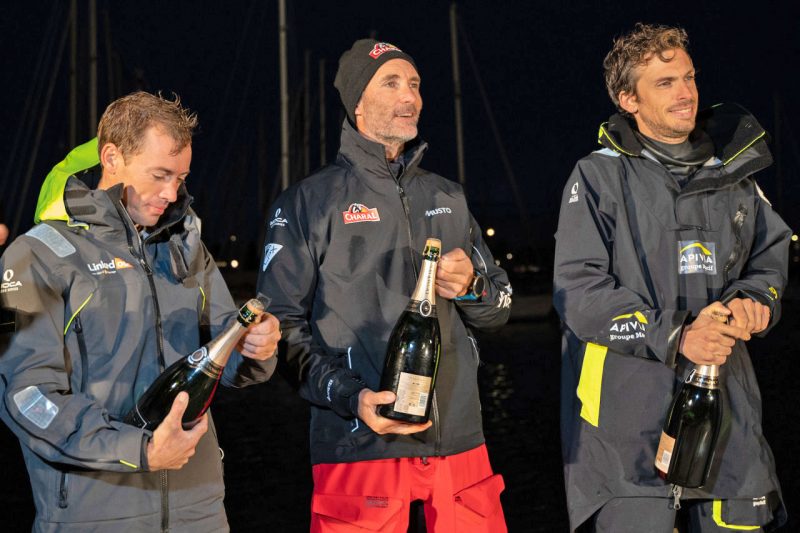
Combined with Brit Alex Thomson, who was MIA to complete his own solo qualifying sail, we would be fairly confident to say that the winner of the next Vendée Globe will likely come from this group. Also hugely impressive in the Vendée-Arctique was fellow Brit Samantha Davies, who finished fourth in the two-generation-old boat Initiatives-Coeur. Sailing a boat that has landed on the podium of the Vendée Globe during the last two editions, Davis could find her way back there in this upcoming race.
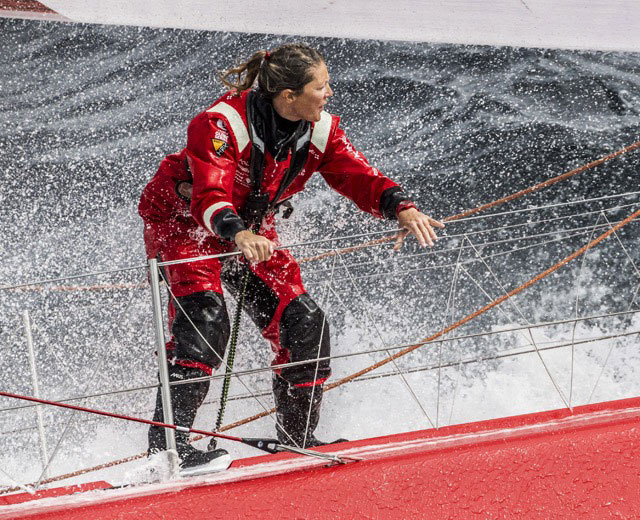
Rounding out the top five was Kevin Escoffier on PRB. He was making his solo debut in the IMOCA class. While new to solo racing, Escoffier has set round-the-world records on the famous Banque Populaire V maxi-trimaran as well as winning the Volvo Ocean Race on Dongfeng. An engineer with an ability to fix most problems that arise on board, Escoffier, as well as Davies, will serve as a dark-horse favorite during the next Vendée Globe. Should the top new boats break, these two could very well assume their place. Other standout performers were Boris Hermann on SeaExplorer/Yacht Club de Monaco and Isabelle Joschke on MACSF.
Leaving Les Sables-d’Olonne, France, on July 4, the fleet encountered heavy weather during the first couple of days of racing while making their way NNW to a mark just southwest of Iceland. After the initial low-pressure system and another band of pressure behind that, it was mostly light air and transition zones followed by a moderate flow of pressure before the next path of light air. While not indicative of a mostly downwind and heavier-pressure round-the-world course, the Vendée-Arctique has shined a light on just how competitive the next Vendée Globe race is likely to be. The Vendée Globe begins on November 8 from Les Sables-d’Olonne.

